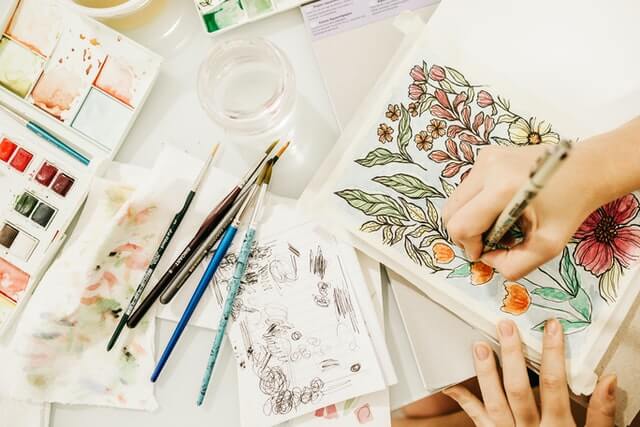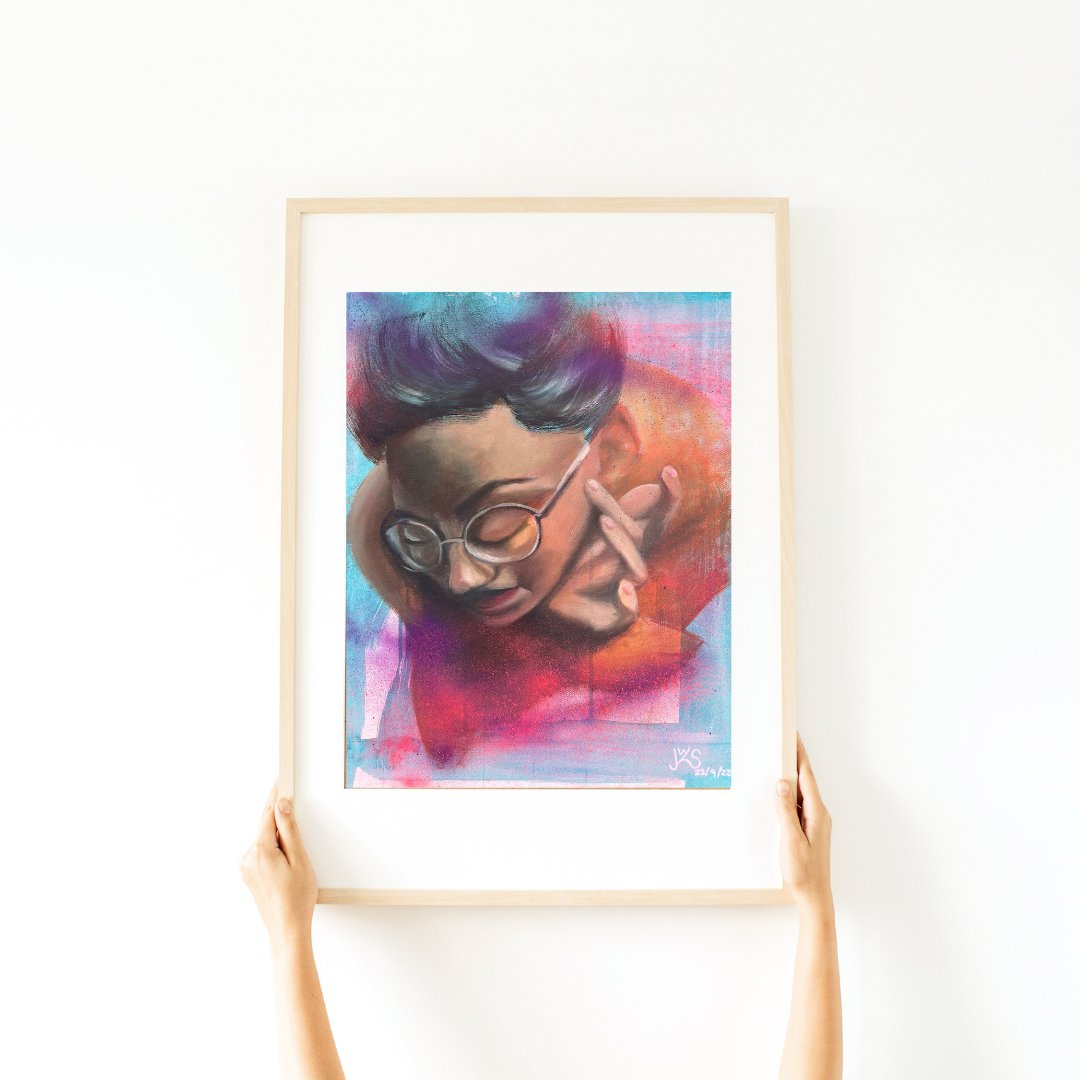
Watercolor - Basics and Materials
Share
Watercolor is specialWatercolor is one of the oldest painting techniques - even the ancient Egyptians illustrated their books of the dead with watercolor. Here I explain some things about the color, the difference to other watercolors and the basic painting techniques
All paints generally consist of the actual color pigments and a binding agent as well as a solvent that makes the paint liquid or keeps it liquid. Watercolors contain very fine color pigments and water-soluble binding agents such as gum arabic - there may also be agents that optimize the flow behavior. Water is used as a solvent in watercolors - this makes them a watercolor like gouache, for example. In fact, gouache and watercolors are like fraternal twins of watercolors - similar, but very different. The weakness of one compensates for the other and vice versa. This means that both media can be combined wonderfully.
Special features of watercolor
In contrast to gouache, which can also be used opaquely, with watercolors the paper usually shines through. In classic watercolors, no opaque white is used - everything that should appear white in the finished picture must be left white by cutting it out or covering it up (masking) beforehand.
These properties give watercolor an airy appearance and high brilliance of colors - in contrast to gouache, which has a more "chalky" finish. In addition, watercolor is usually painted with significantly more water and the pigments have such a fine grain that they color the paper fiber. This places special demands on the paper, because it must not be too wavy and must absorb the pigments well. Gouache also needs good paper, but watercolor is much more demanding in this respect - a good picture stands or falls with the quality of the paper. If in doubt, you should not skimp on the paper.
The painting surface
The paper for a watercolor needs to be absorbent and rough, but at the same time smooth enough for the pigments to spread well and the water to flow. Watercolor paper usually has a grammage of 200-600 grams per square meter. However, the paper can still ripple a lot when painting wet-on-wet - if you want to avoid this, you can stick the paper down with washi tape beforehand - or you can use glued blocks all around.
A distinction is made between cold-pressed and hot-pressed paper - cold-pressed paper usually has a more structured surface and curls a little less - I therefore prefer hot-pressed paper for images that I scan. If you want to paint vegan - some types of watercolor paper traditionally use glues of animal origin - but many manufacturers have already switched to vegetable glues.

The colors
The same applies to paints - if you buy too cheaply, you'll buy twice. First of all, with watercolors you can choose between tubes and pans. I now prefer tubes for portrait work and pans for on the go. Most brands have an academy range in addition to the artist range - the pigments are usually not as finely ground as in the highest price category, but they are inexpensive to get started with.
Be careful with the paints you can buy here and there in decoration shops or discount stores - usually with the label "watercolor". These usually contain inferior pigments and have poor flow properties. Beginners often get frustrated very quickly when things don't work out - but this is due to the material and not the skills of the aspiring artist.
You don't need a lot of colors to get started. Depending on what you want to paint, 6-8 colors are enough to start with - you can achieve the rest by mixing. I'm attaching a photo of my portrait palette - seven colors are enough for me.
The brushes
The rule here is that less is more in the beginning. It is better to buy a good brush that will last you a long time if you take good care of it than to mess around with cheap brushes and lose interest straight away.
To start with, even a single brush is enough - a round watercolor brush in a size between 8 and 12. Well-tied round brushes have such a fine tip that you can also paint fine details with them. The size depends on your preferred painting format - if you prefer to paint on small blocks or in sketchbooks, then a No. 8 is better, otherwise larger.
You can then buy all the other brushes gradually.
What else do you need
Of course - water. Preferably several glasses. Some people like to use one glass for fresh water and one for rinsing the brush. That way you don't contaminate the paint with dirty water. Others say that the contamination over the course of the painting is part of it and gives it a special touch - they use one glass to rinse out warm colors and another for the cold colors. Rinsed jam or mustard jars are enough to start with.
A palette is good - although you can mix in the lid of the box, I prefer mixing in a nice ceramic palette. These are also much quicker to clean than the lid of the box. Since I mostly work with tubes, I can let the colors dry on the palette and then dissolve them again later and continue using them.
Masking fluid or tape for masking - masking fluid can be the devil's work. Especially with fragile paper, the top layer often simply comes off when you remove it. I therefore recommend tape - ideally the pink painter's tape from the hardware store, which is suitable for sensitive wallpaper. You can also stick this on your preliminary drawing beforehand and carefully cut out an outline with the scalpel - then you can cover the area precisely and take no risks.
So, I hope this overview helps - I will be writing more articles here about colors, techniques and so on - feel free to write to me in the comments what interests you. Are you already painting or do you want to start? What were or are your hurdles? Or do you have any comments or tips and tricks? Let me know in the comments.
I am excited - stay creative,
Sabrina



